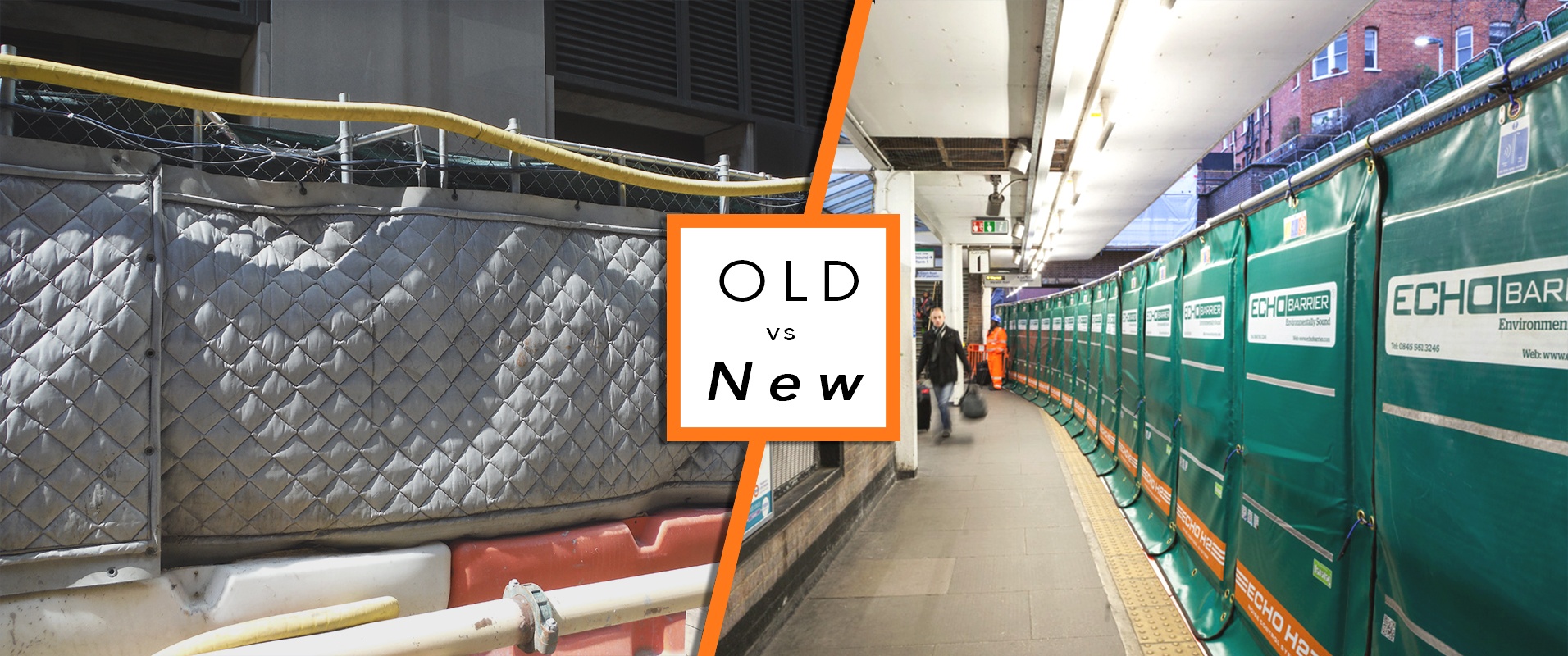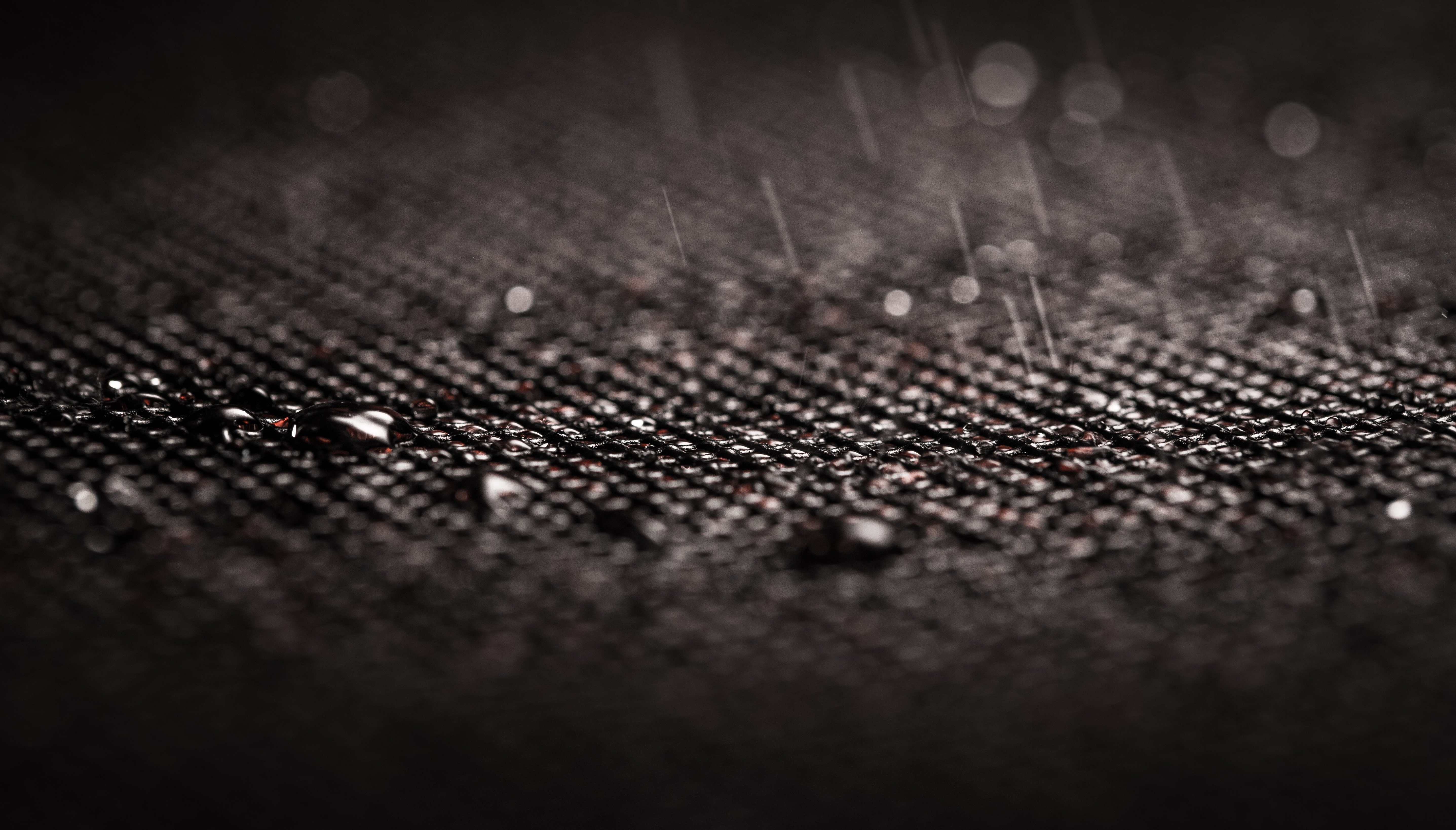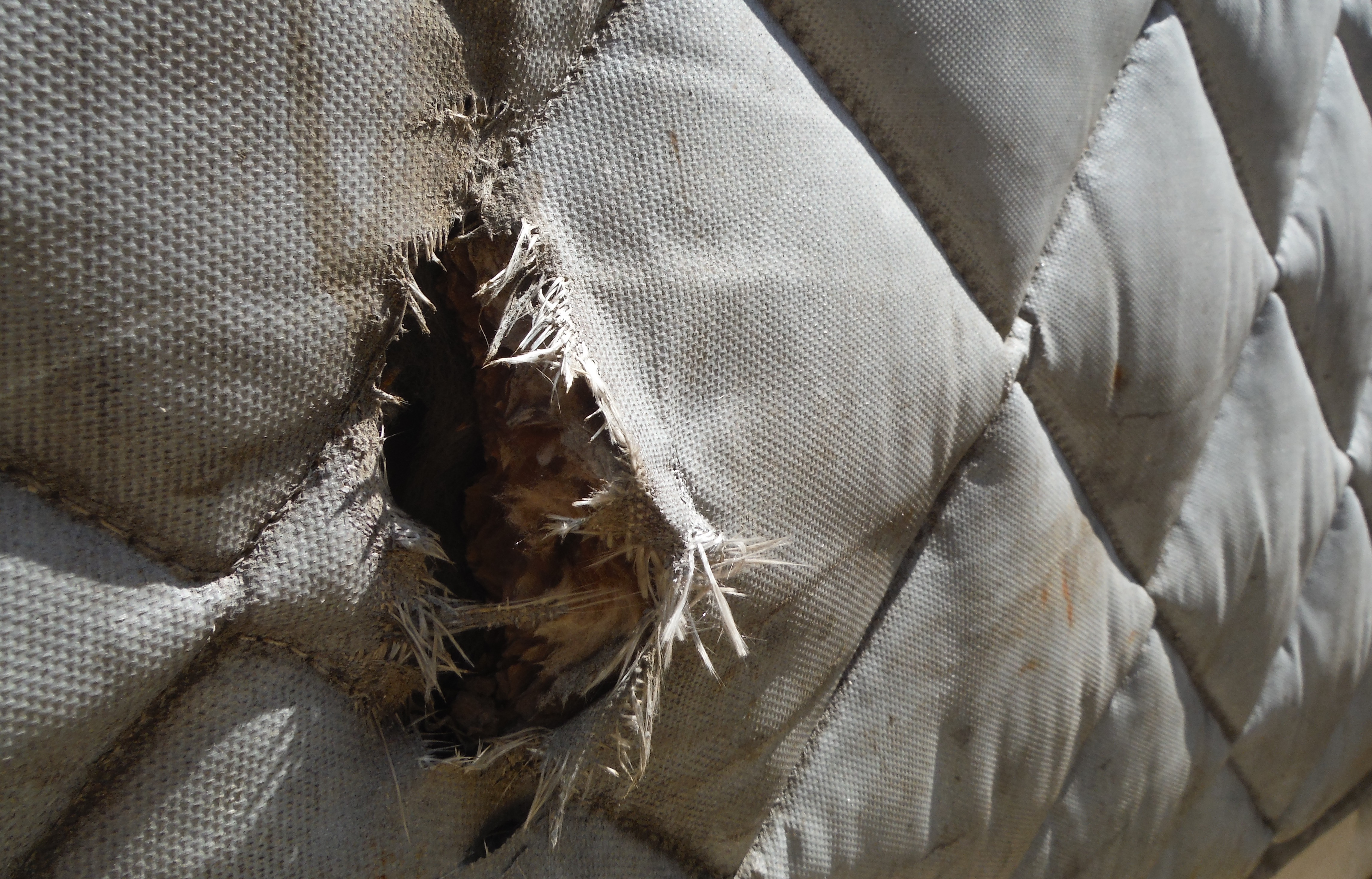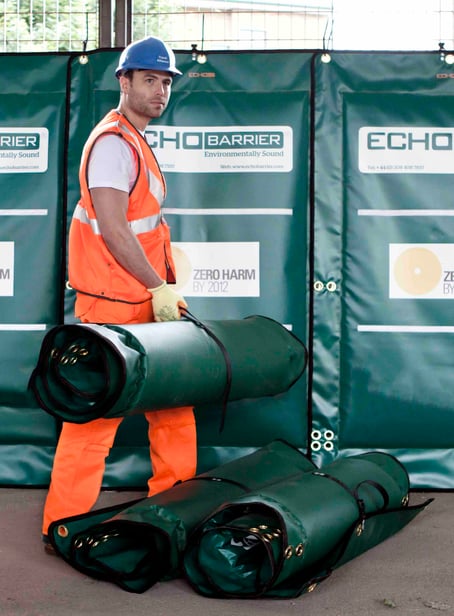
A detailed look into how acoustic barriers vary from sound blankets, and why outdated temporary sound control products are being thrown out for this new technology.
Jump to section
- Temporary Noise Mitigation
- The Cost Of Noise
- Sound Blankets, Barriers, And The Evolving Fight Against Noise
- Breakdown:
- A note on legislative obsolescence
Temporary Noise Mitigation

Thick, quilted fiberglass sound blankets have been used as a tool for temporary noise control across many applications and industries, like construction, oil & gas, and construction, mining, and live events for many years.
However, more recently, a variation of this noise attenuation product has become available on the market to site managers, contractors, architects, estimators, and engineers alike: the durable yet lightweight acoustic barrier.
Echo Barrier manufactures a range of acoustic barriers designed to address the points that sound blankets and other noise attenuation methods miss.
This is a comparison of old sound control and the new, a breakdown of the old equipment versus the new products on the market – sound blankets compared to acoustic barriers.
So what’s the difference?
It’s first important to know a little about why we use sound mitigation.
The Cost Of Noise
In the U.S., 72.6 million urban U.S. residents are exposed to enough noise to cause long-term health effects.
In the U.K., 1169 cases of dementia, 788 strokes and 542 heart attacks every year are the result of modern noise pollution.
Globally, the annual cost of unaddressed hearing loss is conservatively estimated to be in the range of $750–790 billion.

Most people aren't aware of the potential harm being done to them through prolonged noise exposure.
We have come to better understand the impact our industrialized society is having on both our health and economy, and it’s clear:
The question of addressing noise safety and hearing protection on industrial, manufacturing, and commercial applications is no longer up for debate.
Just as seat belts, hard hats, airbags, and life vests were introduced as game-changing safety devices in their time, earmuffs, sound blankets, acoustic barriers, curtains, earplugs, and noise walls are all some of the tools we now implement to lessen the health impact of noise on the people exposed to it.
Sound Blankets, Noise Barriers, And The Evolving Fight Against Noise
While many hearing safety devices help protect the workers and people on a worksite or attendees at a live event, acoustic blankets and barriers are equipment that go beyond that to protect the environment and the greater community.
The design and composition of blankets as a solution for the construction industry had remained more or less unchanged for many years, as quilted fibreglass blankets.
More recently, however, advances in design and materials have seen the introduction of the temporary acoustic barrier as a way to make noise control easier, faster, more portable and manageable, and therefore more cost-effective and efficient.
Read: 5 Tips For Reducing Noise On Site
So what changes have been made to the traditional design, and why do they warrant a transition to the new?
 Modern design and technology bring us acoustic barriers with massively improved durability and weather resistance.
Modern design and technology bring us acoustic barriers with massively improved durability and weather resistance.
While the goal of noise attenuation remains the same, the new designs address the typical drawbacks of the use and assembly of sound blankets, namely durability, efficiency, and cost-effectiveness.
BREAKDOWN:
Noise Attenuation
Both sound blankets and acoustic barriers perform well in doing what they’re fundamentally designed to do: mitigate unwanted sound. However, in lab testing situations, Echo Barrier’s H4 can reach up to 40 dBA noise reduction in lab tests, and 10–35 dBa in practice. Most alternatives won’t achieve a 35 dBa reduction in the lab.
Generally, the heavier the material, the more sound will be absorbed, but in Echo Barrier’s case, the product achieves superior noise reduction while being lightweight at only 12 lb.
Durability
Like most events, worksites and construction projects, it is mostly in tough environments that noise mitigation is required.
A factor imperative to the performance of a blanket or barrier is its durability.
In industrial workplace scenarios, all equipment must be able to withstand rough and careless handling. Echo Barriers have a reinforced mesh inner face, tough enough to endure these harsh environments often for 5 years or more, while typical sound blankets tear and break under equal strain and wear.

Sound blankets notoriously lack the durability that tough construction and work environments call for.
Out in the open, the barriers are completely exposed to the elements. Noise control solutions are frequently required outdoors, in the open air where noise can escape far beyond the boundaries of the site and into the homes, workplaces, streets, and ears of the general populace.
However, unlike heavy-duty sound blankets, the acoustic barrier’s external PVC membrane absorbs sound and not water.
This also means cleaning an Echo Barrier is as simple as rinsing it off after use, which leads to another important aspect of the use of these products…
Efficiency
 |
|
Comprising Echo Barrier's high performance is its ability to be transported, deployed, rearranged, and disassembled rapidly. |
How much of your resources are being wasted on just setting up a site? Sound control is just another safety measure that should be taken, and like all others, it can eat into time that could be used to take care of the job at hand.
You want to get the setup done correctly, but quickly.
You can dig a hole with a spoon, but wouldn’t you rather do it with a shovel?
Owing to its lightweight composition, Echo Barrier takes only a handful of minutes to mount on typical fencing or scaffolding. Acoustic barriers, while managing to be lightweight and highly portable, provide the all the attenuation of a heavy sound blanket.
Read: How To Reduce AC Noise With Sound Blankets & Barriers
And it’s not only Echo Barrier’s panels that are easy to install; the whole range is designed with ease-of-use and efficiency in mind, including the H20 Enclosure, which can be erected within minutes by two people.
Community/Environmental Awareness and Impact
Many tools are made from materials that are potentially harmful to the environment. Echo Barrier’s superior durability is a key feature not only to offer outstanding return on investment for its buyers, but also because the company insists that its products last as long as physically possible – in some instances, remaining in use up to 10 years after purchase – to minimize the waste left at the end of their use.
Unlike most sound blankets, on which you’ll find little to no branding or messaging, Echo Barrier stands by its barriers, labeling its products so that both Echo Barrier and its end users that use it can claim accountability for a positive contribution to the environment, and to the health of people and animals alike impacted by noise pollution.
This is reflected in the positive branding and messaging conveyed by the barriers to those who would otherwise be exposed to damaging environmental noise.
Echo Barrier brings its users' commitment to community health and care to the conscious awareness of the general public.
 Echo Barrier and its users pride themselves on providing more than just superior noise reduction by also bringing awareness to the public health issue of noise pollution.
Echo Barrier and its users pride themselves on providing more than just superior noise reduction by also bringing awareness to the public health issue of noise pollution.
A note on legislative obsolescence
The way we measure the effectiveness of sound mitigation hasn’t budged for 30 years, while acoustic barrier technology has emerged to meet the demands of fast-paced projects. The technology has advanced enough that the current standards to measure attenuation are almost irrelevant to the performance of the attenuator itself.
Legislation needs to be updated to be compatible with real-world application, and to demonstrate the true field performance of temporary noise control devices.
In the U.S., the standard for measuring performance of a noise-mitigating barrier or blanket uses something called STC, or Sound Transmission Class, which poorly reflects the true field performance of the device.
This is because STC is designed to indicate the transmission loss (a decrease in energy as the sound travels through the barrier) given a stringent set of variables, which in the field – on a worksite, at a live performance, in the subway, or in the streets – almost never exists.
As such, STC can make any barricade appear less effective at attenuating sound than it truly is, be it a sound blanket, acoustic barrier, or a 20-foot concrete wall.
.png?width=1000&name=20141228_EarlsCourt_%20(368%20of%20375).png)
Echo Barriers are being used by more contractors as their go-to temporary sound control solution.
The performance of your equipment goes beyond just sound attenuation, especially when your bottom line is at stake. With labor costs, weather, work conditions, and professional image as considerations to made, there is more to the task than the simple reduction of noise.
Addressing these additional functional issues of noise mitigation is the reason why acoustic barriers are the way forward as the temporary noise control solution across all industries.

